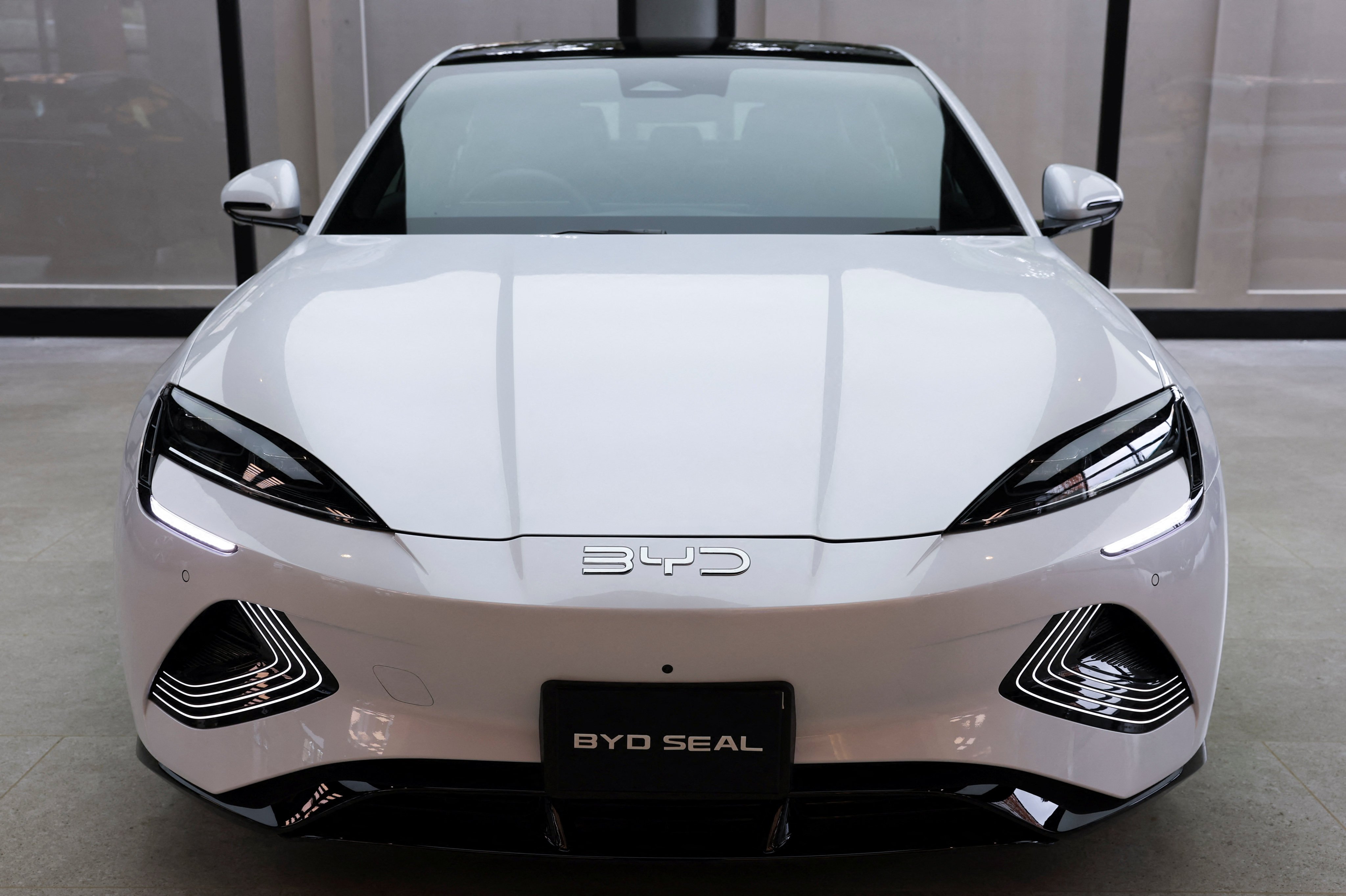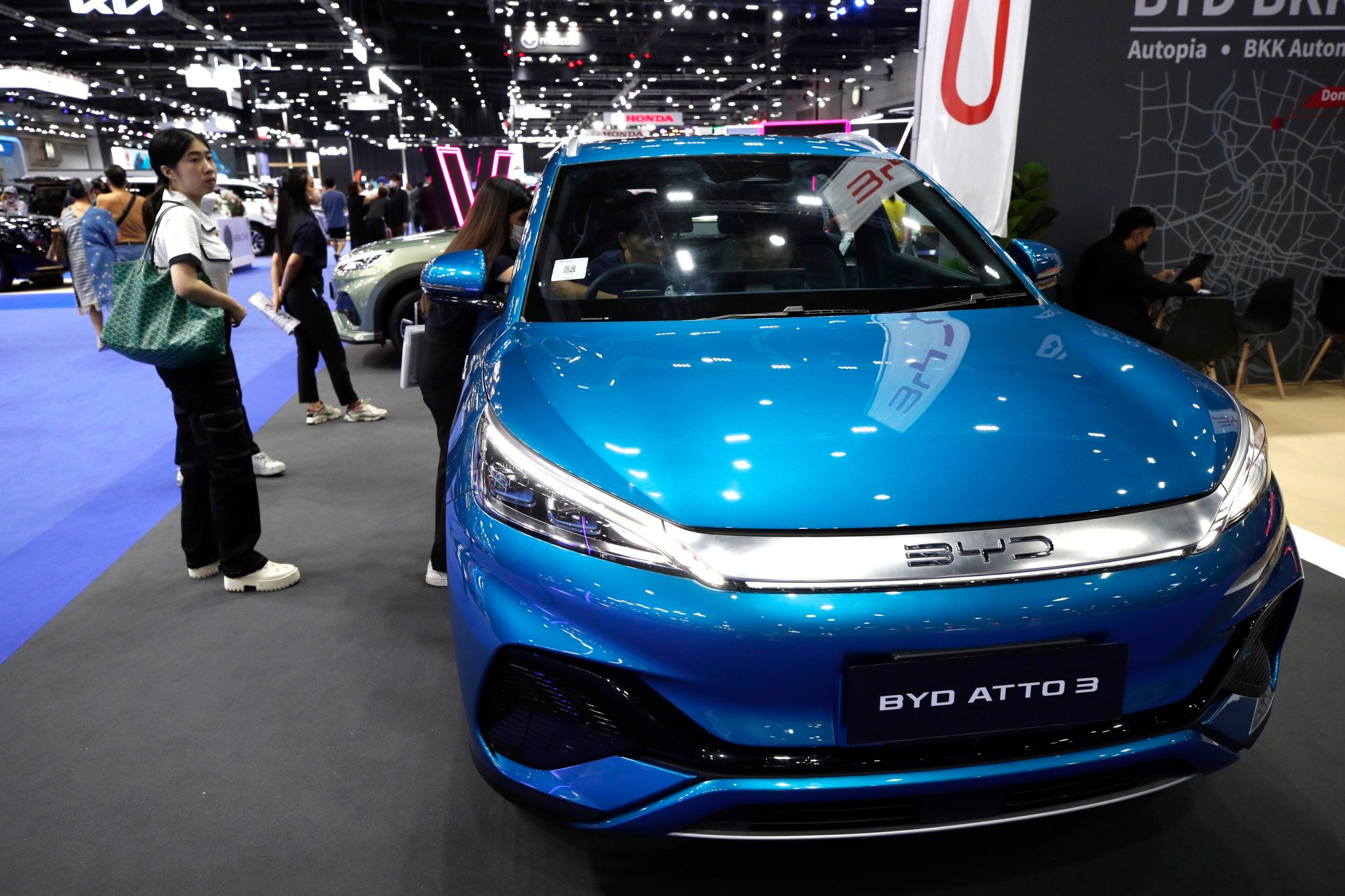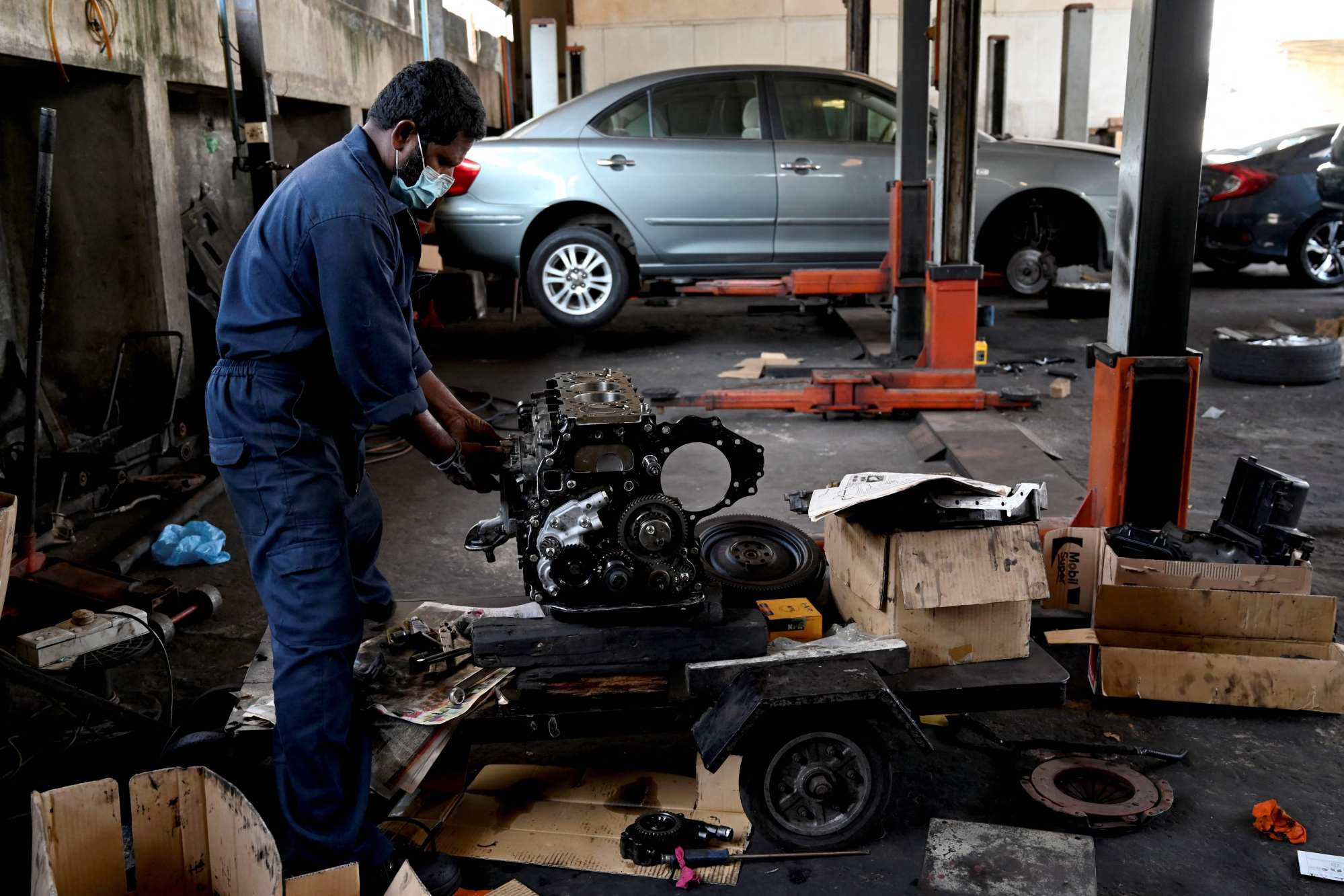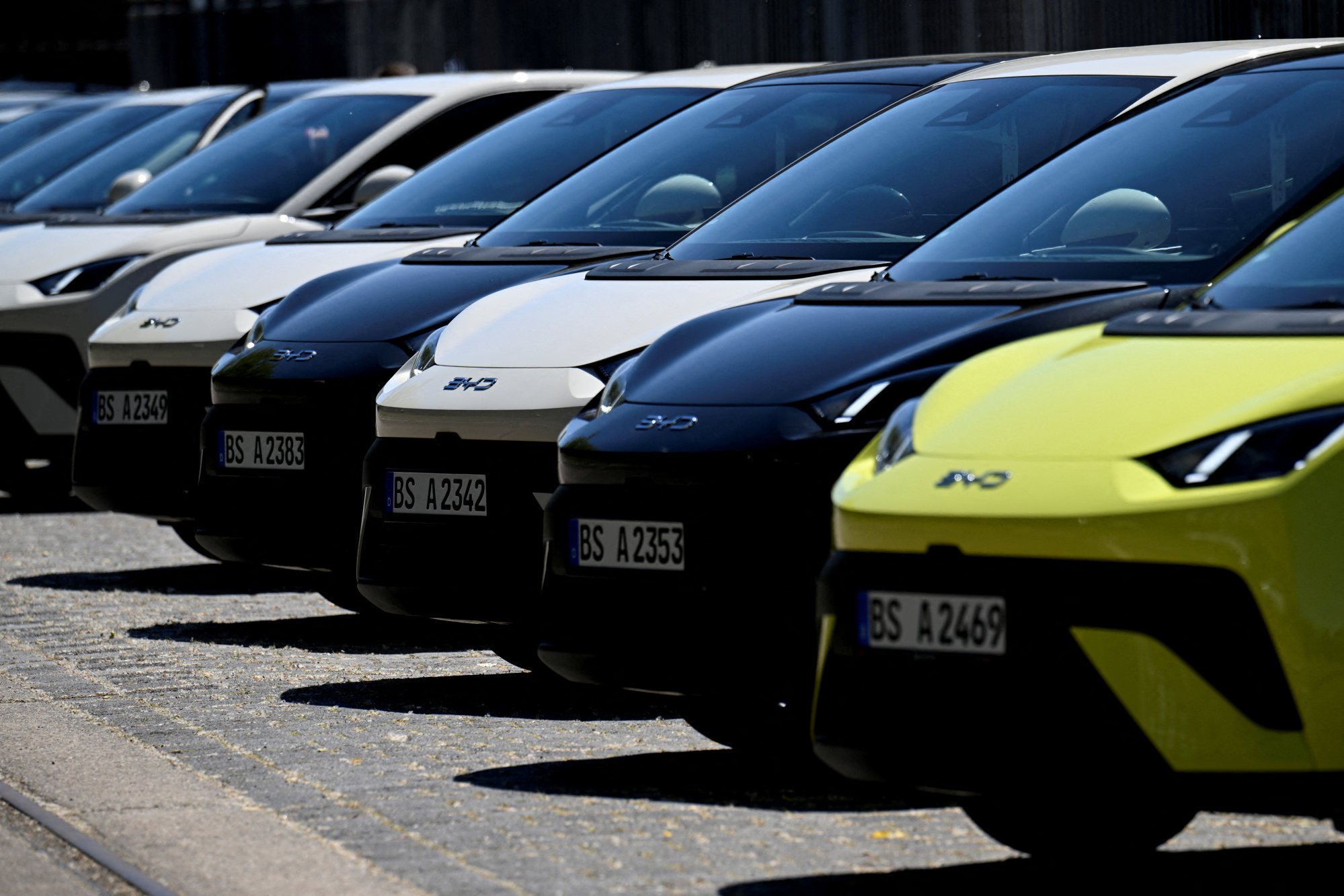How China’s ‘big winner’ BYD conquered Sri Lanka’s car market
After a five-year import ban, BYD shrewdly adapted its models to circumvent sky-high taxes, making electric vehicles affordable again

Aggressive pricing, shrewd tax engineering and a trusted local partner have propelled China’s BYD to a commanding position in Sri Lanka’s electric vehicle and hybrid market, disrupting a sector long constrained by import restrictions and setting the stage for dramatic expansion.
Sri Lanka’s car market, starved of new imports for nearly five years under a sweeping ban imposed in the lead up to the economic crisis of 2022 to stabilise foreign reserves, reopened in February as the government lifted restrictions. But a new tariff regime – with excise duties reaching 300 per cent, 18 per cent value-added tax, and luxury taxes of up to 100 per cent – has sent car prices soaring.
Crucially, import duties on EVs are calculated based on motor power and year of manufacture, with steep tax increases for vehicles exceeding the 100-kilowatt threshold.
Industry analysts say BYD has configured models such as the Atto 3 just below that limit, qualifying for significantly lower duties. In most other markets, the same model features a 150kW motor, making the Sri Lankan variant better value for money.

BYD’s aggressive pricing strategy brought affordability back to the market and positioned the company as a disrupter, Sheran Fernando, former chairman of the Ceylon Motor Traders Association, told This Week in Asia.
Vehicle prices initially surged as the Sri Lankan rupee depreciated sharply against the US dollar, with pent-up demand and dealer mark-ups driving costs even higher during the import ban, Fernando said.
But he said this trend was reversed by BYD and its local agent JKCG Auto – a subsidiary of John Keells Group, Sri Lanka’s largest listed company – whose competitive pricing helped pull down overall market prices.
The evolving price landscape has also exposed the uneven impact of Sri Lanka’s tax regime on different brands. Murtaza Jafferjee, CEO of JB Securities and chairman of the Colombo-based Advocata Institute think tank, said the system’s complexity had created clear advantages for certain manufacturers.
BYD is a big winner because they have far more flexibility in their model offeringsMurtaza Jafferjee, Sri Lankan auto analyst
“Because of the vagaries of the tariff system … it is creating winners and losers – and BYD is a big winner because they have far more flexibility in their model offerings,” he said, pointing to the carmaker’s deliberate adaptation of motor power to skirt higher taxes.
That strategic flexibility has paid off. By May, BYD accounted for roughly 90 per cent of Sri Lanka’s EV sales and nearly 11 per cent of the entire car market – up from just 2.1 per cent and 0.005 per cent respectively in 2018, according to data from Fernando’s team.
“I would expect the total EV segment, dominated by BYD, to be at around 30 per cent of the total market by December 2025,” Fernando said.
This marks the first time EVs have captured a significant share of the car market in Sri Lanka, where they had previously been a niche product.
Buyer confidence has also been buoyed by the strength of BYD’s local partner, according to Jafferjee. JKCG Auto is a joint venture between John Keells Group and Nepal’s Chaudhary Group.
Unhandled type: inline-plus-widget {“type”:”inline-plus-widget”}
“So you know that trust factor is also there, that although it is a new brand, the strength of the partner has made a difference. They have invested in the service and maintenance and warranty.”

By May, more than 5,000 BYD vehicles had been ordered, according to John Keells Holdings. However, JB Securities data showed only 1,254 registrations by June, a lag Jafferjee attributed to shipping and processing delays.
“June is now reflective of the true demand,” he said. “Previously, the demand was building. You might see this momentum for the rest of the year.”
The most popular BYD models, the hybrid Sealion and all-electric Atto 3 SUVs, saw 502 and 501 imports by June, respectively.
Sri Lanka’s car market largely caters to the wealthiest 5 per cent of households – around 450,000 families – with BYD now dominating the mid-range segment, according to Jafferjee.
Fernando said BYD’s range had drawn buyers from across the spectrum, directly supplanting mid-market Japanese saloons, small SUVs and premium hatchbacks, many of which were previously imported as used vehicles.

The Dolphin, priced at 10 million rupees (US$33,000), appeals to small car buyers, while the Atto 3, at 17 million rupees, has seized a large share of the mid-sized market.
“The interesting factor is that in the premium segment, the price difference was so drastic that BYD took market share here as well,” Fernando said, highlighting that the Sealion, at 25 million rupees, was likely to attract buyers from luxury brands such as Range Rover, whose vehicles cost between 100 million rupees and 180 million rupees.
For Habbipriya Karthigesan, a 31-year-old financial analyst from Colombo, the decision to replace her Honda Axio with an Atto 3 was straightforward. She values its “larger” size, “good value for money” and the superior driving experience of an EV.
A particularly welcome benefit, she said, had been the dramatic reduction in running costs. By charging her vehicle with solar power the home she shares with her brother, their monthly fuel expenses have tumbled from around 40,000 rupees to just 3,000 rupees.
However, the rapid adoption of EVs has exposed Sri Lanka’s inadequate charging infrastructure, especially for long-distance travel. “Taking it for long distances is still tricky, and requires a lot of planning beforehand. Really long distances are a risk we will not take,” Karthigesan said.
Prash, a 43-year-old director at a digital media company who asked to be identified by one name only, echoed these concerns, saying his family opted for a BYD Sealion 6 hybrid rather than a fully electric model due to the limited charging network.
Karthigesan acknowledged other potential hurdles, including the eventual cost of battery replacement and the absence of a second-hand market for EVs, but said these were challenges she was willing to accept.
Given the surge in demand, expanding charging infrastructure was now urgent, Fernando said, stressing that government support was essential to ensure sufficient grid capacity and fast-charging options.